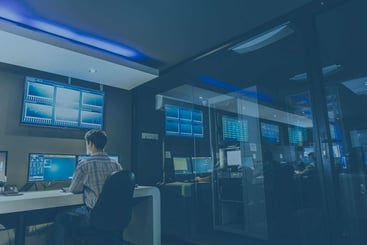Relevant Contents
Need Tailored Business Continuity Insights?
Contact Us Now for Personalized Guidance!
The coming weeks will see most organizations begin making cautious steps back toward their previous way of doing business, though the situation remains fluid and some things might have changed permanently.
In today’s post, we’ll look at six areas every organization should think about as it prepares to emerge from the COVID-19 lockdown and enter business’s next phase.
Related on MHA Consulting: Conduct an IT Wellness Check: Make Sure Your Tech Systems Are Healthy
Emerging from the lockdown will bring many new challenges, but in one way we are lucky. We have time to prepare. This is in contrast to the beginning of the pandemic, when the stay-at-home orders came suddenly, taking most companies by surprise.
At the moment, we are in the calm before the storm. Don’t let the calm go to waste.
Ideally, you should already have started planning for a return of your workforce back to their previous locations. If you haven’t, start today.
What’s it going to look like when you start bringing employees back to the office, recalling furloughed workers, and restarting postponed activities?
In our post two weeks ago, we focused on getting your technology ready to go when emerging from the lockdown. Today we’re going to look at other aspects of returning to work.
Your goal should be to have a controlled and thoughtful migration back.
Business’s Next Phase
It’s hard to find terminology for describing this subject that is both convenient and accurate. To say companies will now begin “returning to work” ignores the fact that most have been working remotely all along. To say people will be “returning to the office” isn’t right because a sizable number of workers might continue working remotely. Finally, it doesn’t make sense to talk about organizations returning to their former way of doing business because many might never do so. We might be looking at a new hybrid model of work, where many companies shift a substantial portion of their workforce to working at home more or less permanently or split between remote and office locations.
All we really know for sure right now is, business is about to enter a new phase. It will be a shift from how things have been for the past two months. Exactly what it will entail will be different for every company. How long it will last is anyone’s guess.
No matter what terminology you use, the considerations discussed below are applicable to all of the aforementioned situations.
If Employees Contract the Virus
Every company that is going to be returning a substantial number of people to a centralized facility in the coming weeks or months needs to have a plan for quickly changing back to working remotely if there is a resurgence of COVID-19 cases in your area.
Six Things to Think About
The following are six areas every organization and business continuity professional should think about as they begin emerging from the lockdown and moving toward the next phase of doing business:
1. Human resources issues.
The first thing to think about are all of the issues that might arise with the organization’s employees. People’s training or certifications might have expired. You might need to reinitiate benefits for returning workers. Some people might have a fear of getting sick. Some might decide not to come back. It might be necessary to train people in new practices regarding social distancing and workplace sanitation. The organization might need to update the sick policy around when to stay home or how much flexibility there is to stay home and work remotely versus taking a sick day.
2. State and local requirements.
You’ll need to comply with the different state and municipal requirements regarding COVID-19 that are in effect in the jurisdictions where your organization has facilities. These might vary widely from place to place. Expect requirements on social distancing, personal protective equipment, and the sanitation of things such as desk surfaces, keyboards, phones, and door handles. The speed with which location can return to full capacity will vary and your plans need to address this.
3. Work efficiency.
Expect a temporary falling off in productivity as people shift from working remotely to whatever the new setup is. People will need time to adjust. Learning to work at home required an adjustment. Going back to the office will also require one. Many people will be glad to be back at the office and to see their colleagues, and this might also have an effect on productivity. Simply going back to the way things were done before might not be possible.
With some in the office and some working remotely, the work dynamic will require adjustment. The hallway conversations and “meeting after the meeting” may occur but now there are those that will be left out of the loop. Don’t forget those that are still isolated and ensure they are included in any work/social activities.
Childcare might continue to be an issue for many people. Schools are not reopening this academic year, and the situation in the fall is uncertain.
4. Technology.
The organization may need to be provide increased support for end-user computing. As people come back to work, they might leave essential devices at home or their devices might be in need of updating or maintenance. Computing equipment and machinery at the office might have gone unused for weeks. For more on getting your technology back in condition, see our blog from a couple of weeks ago, Conduct an IT Wellness Check: Make Sure Your Tech Systems Are Healthy.
5. Third-party support.
What’s going on with your vendors and other third-party contacts? Ensure that you know these organizations’ plans for returning to office locations. Think about the impact of their plans on your company. Assess their response to the initial relocation to determine their level of risk in relocating back. Don’t assume everyone has this process figured out or that everyone is emerging from the lockdown in the same way.
6. Long-term strategy.
Will your company be making any long-term changes to adapt to the new realities? Some companies might aspire to return as much as possible to their previous way of working. Others might want to shift to some new blend of office work and remote work. You’ll need a new remote work policy going forward. Can people who prefer to work at home continue doing so? In some cases, government requirements might affect your options.
The Calm Before the Storm
At the moment we are in the calm before the storm. Soon companies will begin emerging from the lockdown and groping their way toward something closer to their previous way of doing business. If you haven’t already started planning for the return of a sizable number of your employees to your facilities, you’d better start now.
The six areas you should think especially hard about are human resources, state and local regulations, work efficiency, technology, third-party support, and long-term strategy. By getting ready ahead of time, you can make sure your return migration goes smoothly, protecting your employees and helping your organization bounce back.
Further Reading
For more information on emerging from the lockdown, the COVID-19 pandemic and other hot topics in business continuity and IT/disaster recovery, check out the following recent posts from MHA Consulting and BCMMETRICS:
- Working Remotely over the Long Haul: Living with COVID-19 as a Business
- Ready or Not, Here It Comes: 5 Steps to Protecting Your Company Against Coronavirus
- Telephone Train Wreck: Crisis Call Chaos in the Time of COVID-19
- When the Quarantine Ends: How to Be Ready to Reopen Your Company
- The Plan that Time Forgot: The Importance of Protecting Your Business Processes
- Conduct an IT Wellness Check: Make Sure Your Tech Systems Are Healthy.

Richard Long
Richard Long is one of MHA’s practice team leaders for Technology and Disaster Recovery related engagements. He has been responsible for the successful execution of MHA business continuity and disaster recovery engagements in industries such as Energy & Utilities, Government Services, Healthcare, Insurance, Risk Management, Travel & Entertainment, Consumer Products, and Education. Prior to joining MHA, Richard held Senior IT Director positions at PetSmart (NASDAQ: PETM) and Avnet, Inc. (NYSE: AVT) and has been a senior leader across all disciplines of IT. He has successfully led international and domestic disaster recovery, technology assessment, crisis management and risk mitigation engagements.


